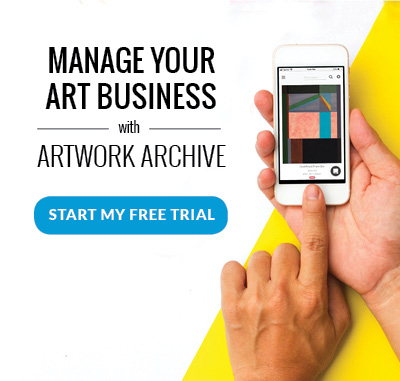 This image was created using the AI generator Dall-e
This image was created using the AI generator Dall-e
AI is in its infancy, but how will it impact visual artists?
The most popular artwork at MoMA right now is Refik Anadol’s Unsupervised which he made using artificial intelligence. After reviewing the 130,000 works in the museum’s art collection, the AI program generates an ongoing visual interpretation of them as a collective whole.
MoMA advertises this as getting to see what a machine would dream about after absorbing 200 years of art history. The art critic Jerry Saltz describes the dream as “a massive techno lava lamp,” “narcotic pudding,” and “mashed potatoes.” Saltz also explores why–beyond being visually bleh–this artwork is controversial:
“The problem with Unsupervised — a problem it shares with other AI programs that use existing written, photographic, and artistic material for their creations — is that it’s derivative and familiar and struggles to transcend its source material. Instead of offering something new, MoMA’s foray into AI is already months behind the curve, failing exactly where other AI programs have failed. If AI is to create meaningful art, it will have to provide its own vision and vocabulary, its own sense of space, color, and form. Things Unsupervised lacks.”
 Unsupervised, Refik Anadol
Unsupervised, Refik Anadol
In other words, AI is smart, but not smart enough to make meaningful art on its own.
How it will develop as an artist’s co-pilot will be largely shaped by the artists who experiment with AI. With the number of user-friendly programs launching, this is not confined to computer nerds.
Perhaps, before we embark on experimenting with AI, we should consider some of the issues that people are (rightfully) panicked about.
Are robot artists replacing human artists?
In September of 2022, when the Colorado State Fair awarded the artwork Théâtre D’opéra Spatial with a blue ribbon, viral outrage ensued. Upon appearance, the winning piece looks like a 16th-century painting having a peaceful conversation with outer space. But when people learned the art was made using AI, they said it wasn’t fair and that the artist “broke rules." The judges, who learned about the AI component after the fact, disagreed and said they’d still pick it if they had known. According to the artist, Jason Allen, “Someone had to be first.”
The panic (and anger!) over Allen’s award kept coming back to the fear that robots will replace humans in all creative endeavors. There is even concern that art will die.
We experienced this mixture of panic and fascination when photography was invented.
In 1853, Lady Elizabeth Eastlake wrote one of the first essays exploring the relationship between photography and art during a time when artists felt they were competing against technology (and the sun) to make art. To the 19th-century artists who were feeling hopeless about the future of art following the invention of photography, her advice could apply to artists today concerning AI-related anxiety:
“If, therefore, the time should ever come when art is sought, as it ought to be, mainly for its own sake, our artists and our patrons will be of a far more elevated order than now: and if anything can bring about so desirable a climax, it will be the introduction of Photography.”
Furthermore, AI cannot make art the way we humans do because AI is not sentient
As cliche as this may be, you may find comfort in the tortured artist trope.
AI is not sentient. AI does not feel and, therefore, AI doesn’t suffer. Aldous Huxley once said, “Can an artist do anything if he's happy? Would he ever want to do anything? What is art, after all, but a protest against the horrible inclemency of life?”
Whether it is pain or pleasure, art is often born out of feeling. Certainly, good art is. AI doesn’t have–and likely never will have–the capacity to make an artwork born out of a profound feeling. AI can respond to a prompt to “create beauty” but doesn’t actually understand what beauty is.
As the technology writer, Brian Christian, said in a recent interview, AI software is “essentially like someone who has lived their entire life in a windowless room with an internet connection … and has read everything that has ever been written on the internet but has no idea what anything actually is beyond how it is spoken about.”
AI’s presence will make us appreciate human art and expression even more
This month, the Wired article “AI Will Make Human Art More Valuable” argued that AI will only increase appreciation and desire for human-made art:
“...the AI revolution will elicit a further elevation of ‘authenticity’ from consumers, which painters and illustrators and writers will pounce on. Far from signaling a decline of original art made by humans, the advent of AI will render it more precious by contrast. The gap between the artists and the robots will grow wider, just as their technical abilities continue to converge.”
The writer delights in the way people, unlike robots, have passion for their art and a life story to accompany the work they make–characteristics robots will never have.
But, there is an issue with AI using copyrighted images
Last September, Getty Images banned AI-generated images due to copyright issues. AI pulls from and uses images that exist on the internet. The icky verb that is constantly used to describe this process is “scrape.” AI rapidly scrapes images and, yes, pulls from copyrighted images.
Yes, this is an issue.
Lawsuits are piling up to address legal restructuring. Copyright laws are being revised to address the new terrain. Organizations such as Content Authority Initiative are actively working to fight disinformation and protect digital provenance. These efforts are growing just as fast as AI is figuring out how to be an artist’s assistant.
This is not our first rodeo. We have been through a copyright issue like this before in the realm of music sampling which, as Nettrice Gaskins reminds us in her article, “Hip-Hop Sampling vs. Scraping Data for Art,” prompted criticism and copyright infringement panic. Today, it is rare to come across a musician who opposes their music being sampled, especially since it is pretty easy to request permission and/or pay for the rights to use another musician’s work.
The copyright matter will be explored in greater depth in a subsequent post, but for the time being, try to see this as the trial-and-error phase of a new tool rather than a robot villain who wants to steal everyone’s art.
We are all a part of this historical moment with AI at our fingertips for the first time.
How do you want to be involved?
Even though AI is just getting up on its Bambi legs, it is going to keep growing and learning. AI is here to stay and we have the option to play a part in shaping it. Perhaps read What to Expect When You’re Expecting Robots and consider how to raise this robot kid?
When you have questions about the future, you can consult artist Dave Greber’s AI-generated CyOracle Tarot deck of Digital Serendipity and Transhuman Wisdom. The 78-card deck combines ancient and modern symbolism to offer insight and guidance for navigating the digital age. CyOracle can encourage us to question our assumptions and perceptions and consider technology's impact on our lives and society as a whole.
Keep up with the latest art news and tips by joining our weekly newsletter, where we send you art business advice and resources to grow your art career. Sign up here.






